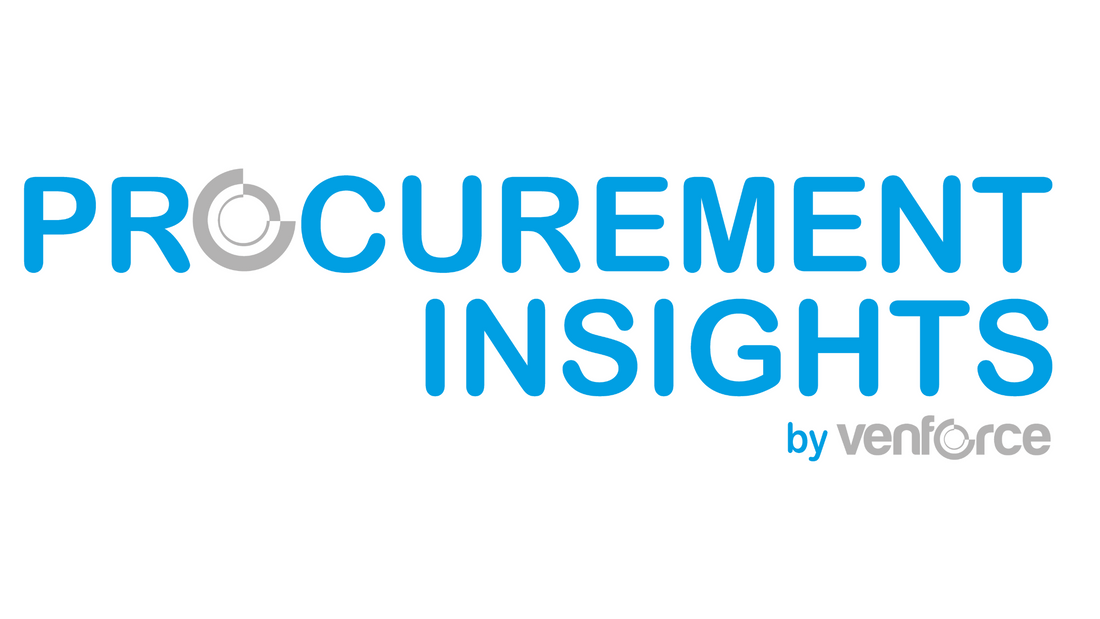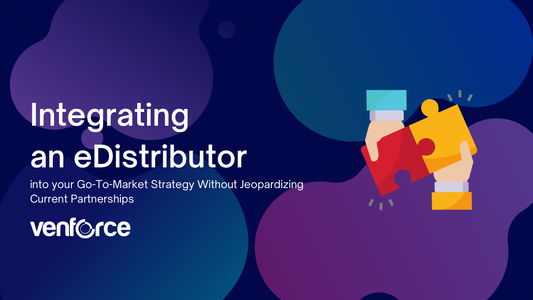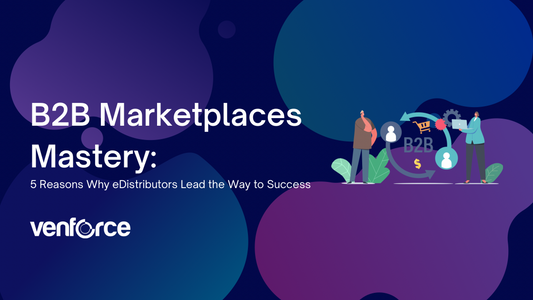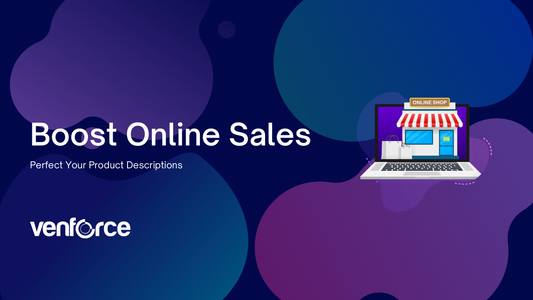We live in unprecedented times. The COVID-19 pandemic created a lot of uncertainty in the world, with many countries going into lockdown in an attempt to control the spread of the virus. This had a significant impact on the global economy and supply chain, with businesses across the world having to close their doors for some time. With the outbreak of war in Ukraine, the situation is further complicated. The rising gas prices and ongoing inflation, increase production costs and lead to problems in the industrial base supply chain. As a consequence, products with an energy-intensive production such as AdBlue need to be adapted to the new conditions or there is going to be a shortage. This has created a lot of instability and made it difficult for businesses to operate as usual and is resulting in critical supply chain structures.
What does the post-COVID era mean for businesses?
During recovery from the crisis, effectiveness will be key to business strategies. Yet most executives don't understand how their supply chain needs an update in order to react fast. Everyone is meddling in the decision-making process of which products should be bought and some employees even buy without authorization from above (Maverick buying) and buyer's skills. In order to guarantee constant supply, the supply chain resilience of small and medium-sized companies is of strategic importance.
Buyer Task Force - Planned buying in order to avoid shortages
The task force focused on a simple purchase of the cheapest product in order to solve a problem in the past. Nowadays, it is a special team of skilled workers as in Venforce that typically has experience and expertise in the key areas they are assigned to. The task force members work together to find the best possible way in order to identify supply chain vulnerabilities.
Different types of buyer task forces
In every company, you are going to find different types of buyer processes and there are two primary types of buyer task forces. Standard buyer task forces are created by businesses in order to carefully consider all potential vendors and to ensure supply chain security. These teams are typically composed of employees from different departments within the company, each of whom has a specific area of expertise. Maverick buyer task forces, on the other hand, are created by extraordinary situations. An employee makes a purchase without conferring with their colleagues. This type of buying can be advantageous if specific resources are needed quickly and there is no time for a lengthy decision-making process. However, it can also lead to poorer purchase decisions, as maverick buyers may not have access to all of the information, supply chains, services, and resources that a standard buyer task force would have in the private sector.
How to create an efficient task force that reacts as fast as a Maverick buyer
An efficient task force is essential in order to ensure supply chain security quickly and avoid maverick buying. In order to create an efficient task force, it is important to consider the following factors:
- The size of the team should be small enough that everyone can easily communicate and work together, but large enough that there is a diversity of skills and perspectives.
- The team should be composed of individuals with the necessary expertise and knowledge of how to recognize supply chain vulnerabilities.
- The team should have a clear and concise supply chain pose with specific roles and responsibilities assigned to each member.
- There should be regular communication and coordination among team members, in order to ensure that the supply chain resilience continues after changes in the market.
- The team should be prepared to rapidly adapt to changing circumstances in order to stay ahead of the competition and to reduce any possible risk.
The process of activating the task force for critical products
In order to set up a task force, there are a few key steps that must be followed. First, the organization needs to identify supply chain vulnerabilities or opportunities that the task force will address. Next, the team must be able to improve the process for supply chain resilience. Once these steps are taken, they need to develop a plan of action and allocate resources accordingly. If the team identifies critical supplies or supply chain threats the task force needs to be activated, with clear objectives, a well-organized supply chain, and timelines in place.
Critical products in the industrial base supply chain
A critical product is a good that is essential to a company's operations and cannot be easily replaced. The concept is often used in the context of supply chain management, as it is important for companies to identify which products are critical so that they can take steps to ensure uninterrupted supply in the private sector.
There are a number of factors that can make a product critical, such as:
- Its importance to the company's core products or production capacity
- Its unique features
- The lack of viable substitutes
Identifying critical products is an important step in developing a robust supply chain strategy. Once critical supplies have been identified, companies can work to develop contingency plans in case of disruptions and build relationships with key suppliers to avoid a risk of future shortages.
Critical products and supply chains right now
The current conflict in Ukraine is causing fears of a wider and long regional war, which could lead to disruptions in the supply chain of natural gas from foreign suppliers. Therefore, many countries are stockpiling natural gas and other energy supplies in case of a winter shortage. In addition, the rising price of oil is putting pressure on both consumers and businesses.
As a result, products of politically unstable areas and goods that use oil or natural gas as inputs are becoming more expensive. For example:
- Plastics and Chemicals (as AdBlue) made from petroleum
- Medical protection as masks and COVID tests in large quantities for national security
- Electrical devices of the communications technology
- Replacements of different countries, particularly China and India
- Emergency tools as personal protective equipment
- Clean energy technology as solar panels and accessories and other devices
- Rare earth elements
- Different products for the defense industrial base
Similarly, transportation costs also increase. Consequently, a wide range of products is likely to become more expensive in the acquisition process due to the rising price of energy. That's where Venforce comes in. We are experts in Ad hoc procurement and are able to purchase critical products as we built up a strong supply chain.
What do Ad hoc buying supply chains have to do with the task force?
A task force working group is a bit like having a SWAT team on call to go out and get the best deal on whatever you need, whether it's a new car or a bulk order of office supplies. Ad hoc buying, on the other hand, is more like going to the corner store for milk when you're already out of milk and need it right away. It's not the most efficient way to do things, but sometimes it's the only way. In general, Ad hoc buying is more expensive than task force buying because it doesn't allow for negotiation or volume discounts in small quantities. However, there are times when it's the only option, such as when you need something urgently and can't wait for a task force to be assembled. In those cases, Ad hoc buying can be a lifesaver.
The importance of Ad hoc buying for crisis management
In today's fast-paced world, the supply chain must be able to respond quickly to changes in the market. This is especially true during times of crisis when every decision can mean the difference between success and failure.
While it may seem like a risky strategy, Ad hoc buying can be an essential tool to prevent future shortages. By definition, a crisis causes a risk that is unpredictable and often unanticipated. As such, everyone must be prepared to adapt on the fly. Unfortunately, especially small and medium-sized businesses, healthcare workers, and federal partners do not have time to analyze the market. Then they can use companies such as Venforce as their Ad hoc buyer.
Because of which situations should a company activate a task force for Ad hoc buying?
It should be activated when a crisis interrupts and production capacities can't be used with its full capacity because of missing products. A crisis can come in many forms, such as natural disasters, terrorist attacks, pandemics, and financial crises.
- Natural Disasters - When a natural disaster strikes, an organization's crisis management team will immediately spring into action. The goal is to minimize the damage and risk of disruptions caused by the disaster and to ensure the safety of employees and customers.
- Terrorist Attacks - In the event of a terrorist attack, economic and national security will work to secure the premises and evacuate anyone who is in danger. They will also liaise with the official government organization and other emergency responders to ensure that everyone is safe and accounted for.
- Pandemics - In the event of a pandemic, the crisis team will work to ensure that health workers have personal protective equipment and access to medical care. They will also develop plans for how the industrial base can continue to operate if there is a significant decrease in customer demand.
- Financial Crisis - If a financial crisis hits, the task force's work is to develop plans for how to reduce costs and keep the business afloat. They will also work with lenders and investors to ensure that the company has access to capital.
- War - Unfortunately, we have experienced how war can cause a crisis as there is suddenly a lack of products and political instability. In these cases, the whole government effort is focused on solving the conflict. Domestic production cannot work well and that's why the private sector should find alternative suppliers for needed goods.
Crisis management is an important part of running a business. By having risk mitigation strategies and a stable supply chain in place, you can minimize the damage caused by a disruptive event and ensure that your production capacity can be fully used.
The benefits of having an Ad hoc Buyer in place for critical products
When a company experiences a product shortage, the consequences can be devastating. Not only is there the potential risk for costly litigation, but there is also the very real possibility of lost end users and damage to the company's reputation. To help mitigate these risks, many industries have put an external Ad hoc Buyer in place, in order to reduce reliance. By having an Ad hoc Buyer in place, companies can ensure that only quality products in well-organized supply chains are purchased and that they are not vulnerable to price gouging by suppliers. Additionally, it allows companies to quickly and easily make decisions about what products they need and how best to obtain them. This can be especially important during times of crisis when fast action is essential.
- Increased efficiency in product development: The right Ad hoc buyer can help with the development process by identifying the price market of the materials needed. That way, you ensure manufacturing your product right away, resulting in a more efficient product development process and a better final product.
- Better organization of resources: The Ad hoc buyer buys the products you need. He usually has many supply chains in order to guarantee a fast purchase. This will lead to a more efficient and effective company overall.
- Greater flexibility in the marketplace: It can help to make your company more flexible in the marketplace by finding new suppliers, negotiating better terms, and increasing your supply chain funnels. This will give you a competitive edge and help you to weather any storms that come your way.
- Increased profits: Ultimately, you can increase your profits even in a crisis by saving money on your purchases and increasing sales. This will have a positive impact on your bottom line and help your business to grow.
What can I do when there is a product shortage?
In today's world, it's more important than ever to be proactive about avoiding product shortages with a comprehensive strategy. With so many moving parts and variables at play in the global marketplace, it can be difficult to predict when and where a shortage might occur.
What Causes Product Shortages?
There are a number of factors that can contribute to a product shortage. Here are some of the most common:
- Unforeseen demand spikes: If a product experiences an unanticipated increase in demand, the supply chain may not be able to keep up. This can happen for any number of reasons, including changes in the tastes of end users or sudden publicity (both good and bad).
- Weather: Extreme weather conditions can disrupt supply chains and cause shortages of food and other perishable goods. Similarly, if crops are damaged by a natural disaster, that can lead to shortages of agricultural products.
- Geopolitics: Political instability in supplier countries can lead to disruptions in the supply chain and shortages of finished goods. For example, if there is civil unrest in a country where your company sources its coffee beans, that could lead to a coffee shortage.
- Production problems: If there are problems at the factory where a product is made—such as a fire or power outage—that can obviously disrupt production and lead to shortages. Additionally, if suppliers are unable to get the raw material supplies they need to make a product, that can also create shortages.
- Transportation issues: If there are disruptions in the transportation system—such as a strike by truck drivers—that can lead to delays in getting products to market, which can cause critical supply chains.
How Can You Avoid Product Shortages?
The best way to avoid product shortages is to be proactive about monitoring potential risks and taking steps to mitigate them. Here are some things businesses can do:
- Choose a second source supplier: Sharing your product information for critical products prevents critical supply chains. If you have trouble meeting demand, the other one should be able to pick up the slack.
- Form a buyer task force: This is a team of people whose sole purpose is to monitor potential risks to the business's supply chain and take action to mitigate them. The task force should meet on a regular basis—ideally weekly—to discuss potential risks and possible solutions.
- Ad hoc buying: This is a technique whereby you buy products at once. This helps companies avoid being caught with too high inventory if there is an unexpectedly high demand for a product or if there is a disruption in the supply chain.
- Critical product buying: This is similar to ad hoc buying, but with one key difference—companies only do it for critical products (i.e., there are risks of a critical supply).
- Maverick buying: This is when companies allow employees to purchase products without information sharing if there is some other type of disruption in the supply chain. This should only be done as a last resort and under very controlled circumstances so that businesses don't end up paying exorbitant prices for goods or getting inferior quality products.
- Use several supply chains: Don't rely on one supply chain if you are able to use several ones with buyers like Venforce. This assures a constant supply and you reduce reliance.
Are other countries experiencing supply chain issues?
Different regions of the world are facing supply chain problems whose causes vary. Particularly China has affected the manufacturing sector in recent months and in the United Kingdom, it's mainly Brexit and Covid that have led to problems in the supply chain. As the global economy begins to reopen after the pandemic, businesses are grappling with the challenges of restarting their operations. One of the most pressing issues is the state of the economic and national security of the supply chain. In 2022, European Union countries begin to experience disruptions in their supply chains due to Brexit and the Ukrainian war. Furthermore, weaponizing supply chain vulnerabilities are more visible than before, because of the high demand in the defense industrial base. This is likely to have knock-on effects for other countries that export to or import from the EU. Moreover, there is high inflation both in the USA and in Europe. As a result, businesses need a defense supply chain strategy in order to see potential risks and plan accordingly. Other countries that are likely to be affected by supply chain problems include Switzerland, Norway, and Liechtenstein.
Why you need Venforce as Your Second Source Supplier
At Venforce, we believe in the power of procurement. In a constantly changing and evolving world, we know that it is important to be agile and adaptable. That's why we offer our clients procurement methods that are both flexible and efficient. With a worldwide supplier network, we can provide our clients with the materials they need when they need them. Political unrest? COVID-19? Ad hoc special procurements? We can handle it all!
What we do
We started as a PIM System integrator and have become a one-stop-supplier for most procurement needs. We offer a wide range of services, from strategic sourcing to contract management to supplier development. In everything we do, our goal is to help our clients create value and achieve their objectives.
How we do it
We are relentless in our pursuit of the best possible outcome for our clients. We are constantly thinking about how we can improve our processes and procedures. Venforce uses the latest technologies and tools to make sure that we are always ahead of the curve. And, most importantly, we always put our clients first.
What sets us apart
Many companies offer similar services to ours. So, what sets us apart? First and foremost, it is our commitment to excellence. We go above and beyond for our clients because we believe in building long-lasting relationships. Secondly, our team is comprised of experts who are passionate about what they do. When you work with us, you can rest assured knowing that you are in good hands.
What are you waiting for? Contact us today!
If you're looking for a second source supplier who can streamline your procurement process, look no further than Venforce. We'll take care of everything so you can focus on what's important - running your business. Contact us today to learn more about how we can help you!



